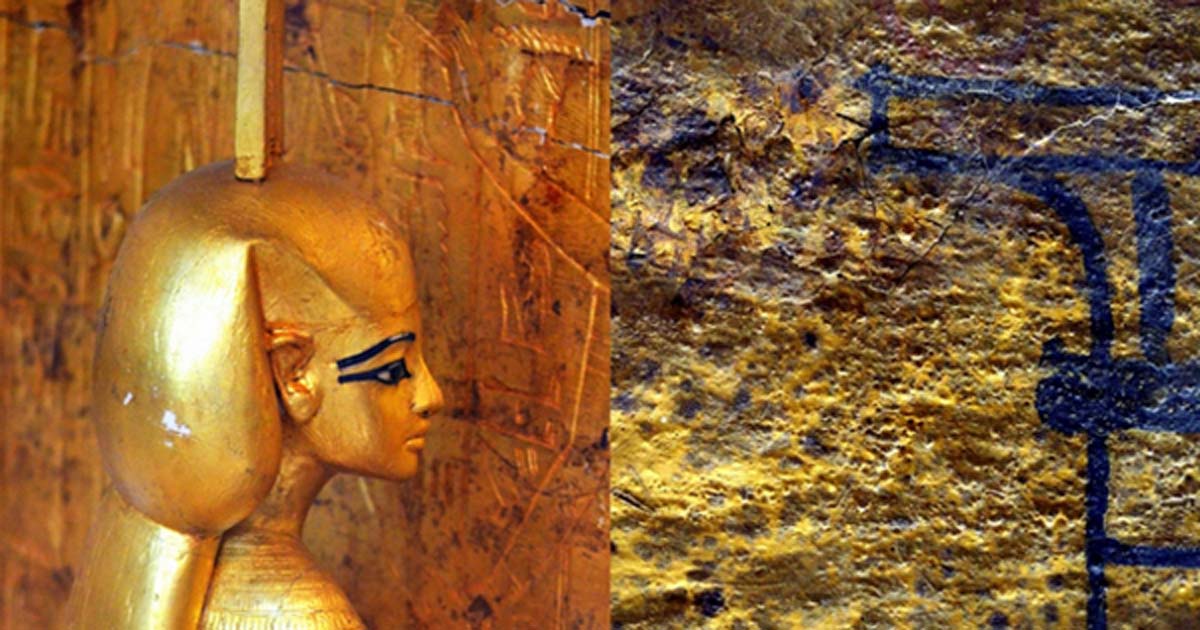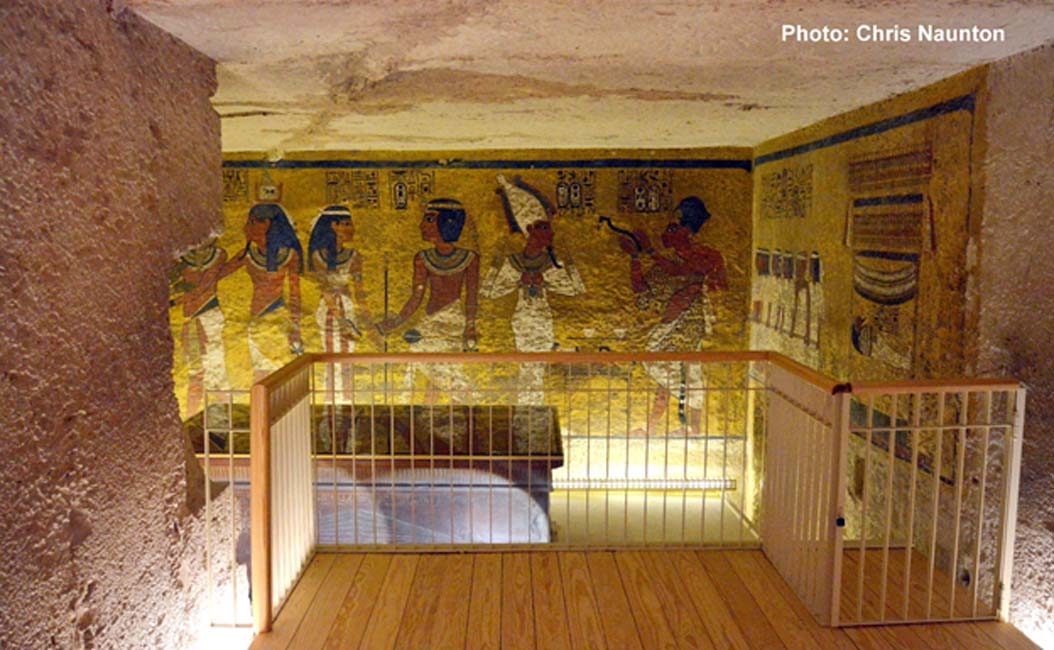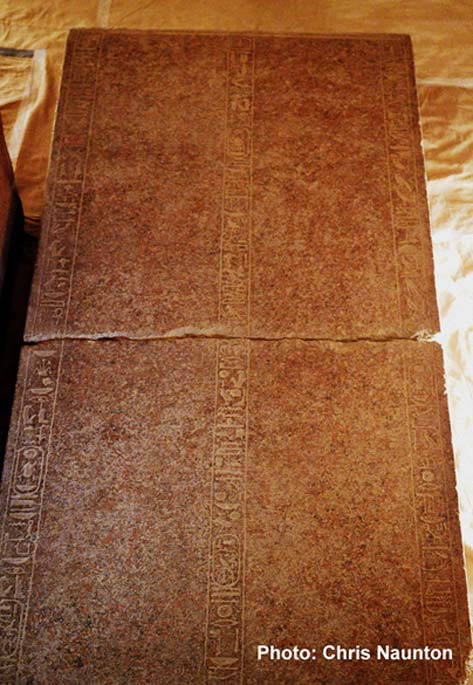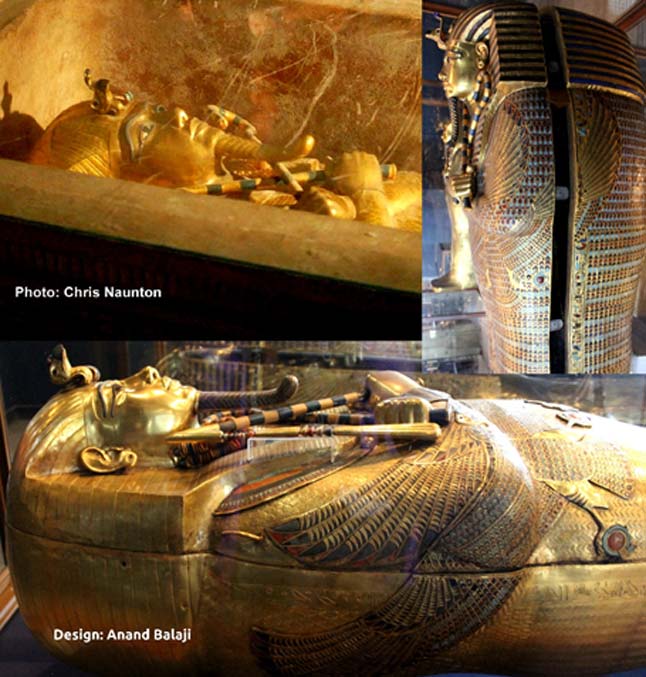
When the Falcon Had Flown: Evidence of Approximate Order in Burial Paraphernalia – Part II
A great deal of ritualistic activity was involved in the burial of royals in the ‘Valley of the Kings’. This apart, stocking their tombs with everything that they would need in the Afterlife was crucial. The procedures seem to have followed a definite pattern as laid down since time immemorial. So, was the chaotic arrangement of funerary goods Howard Carter encountered in Tutankhamun’s tomb an exception?

Tutankhamun’s Burial Chamber, looking in from the Antechamber. Straight ahead, the north wall shows various funerary scenes involving the deceased pharaoh. The modest size of KV62 and its inadequate decoration have for long baffled Egyptologists.
Tutankhamun: Proof of Appropriation?
Dr Marianne Eaton-Krauss is of the opinion that the KV62 sarcophagus was not made with Tutankhamun’s burial in mind. However, some Egyptologists argue that the KV62 basin was made for Tutankhaten soon after his accession, with the alterations following on the change of his name to Tutankhamun. Dr Aidan Dodson contends: “As for Tutankhamun’s sarcophagus, all one can say is that the coffer was almost entirely re-inscribed at some point, but no traces of the original texts survive to give a clue as to whether it was as a result of being usurped from another (Smenkhkare and Neferneferuaten being the two obvious candidates) or followed Tutankhamun’s name-change from the Aten-form. However, there is no evidence of any changes to the lid-texts.”

Carved from a single block of red granite, this ton-and-a-quarter heavy lid, which is cracked in the middle, was in all likelihood a replacement for the originally commissioned piece which could not be readied in time for Tutankhamun’s burial.
But all the texts on the coffer were erased and new inscriptions carved, not just the cartouches. Based on this evidence Dr Marianne Eaton-Krauss points out, “(The) inscriptions - like the figures of the goddesses carved almost in the round at the corners - preserve evidence of alteration, by contrast to the lid’s pristine texts and decoration. The modifications affect all the texts on the trough and include the addition of wings in low relief to the female figures, which significantly reduced the surface area available for re-inscription. These changes can best be accounted for by proposing that the coffer was originally commissioned for the burial of someone other than Tutankhamen.”

The nest of three dazzling coffins that contained the mummy of Tutankhamun. (Clockwise from left) The boy-king’s outermost, middle and innermost coffins; the last being made of solid gold. Egyptian Museum, Cairo.




